Capturing Chiang Mai: Top 5 Markets for Vibrant Photography
- Tatiana Mocchetti
- Jun 4
- 11 min read
Chiang Mai is a visual playground for photographers, and its local markets are among the city’s most compelling subjects. Whether you’re drawn to the warm light of early morning, the electricity of night markets, or the colorful textures of daily life, each market in this list offers its own unique rhythm and aesthetic. In this guide, we’ll explore five iconic markets—Warorot, Muang Mai, Ming Muang, Bumrung Buri, and Ton Lam Yai—that will elevate your street and market scene photography.
🛍️ Warorot Market (Kad Luang): Day and Night Through the Lens
In the heart of Chiang Mai, nestled just north of the Ping River, Warorot Market—locally known as Kad Luang—stands as one of the most iconic and oldest markets in the city. For photographers, it is a dreamland of contrasts: vivid textures, cultural depth, candid human stories, and ever-changing light. Whether visited in the early morning or late at night, Warorot offers a rich and layered visual experience perfect for building a strong and diverse portfolio.
🌞 Warorot Market by Day: Color, Culture, and Commerce
During the day, Warorot is alive with bustling activity. Locals flock here for everything from fresh vegetables and meat to household goods, Chinese herbs, and traditional textiles. The market is a sensory explosion—vivid red chilies heaped on woven baskets, silver and gold foil-wrapped joss paper hanging overhead, and the rhythmic chatter of bargaining echoing through narrow passageways.
From a photography standpoint, this is a golden hour for documentary-style market photography. The natural light filters through metal roofs, creating dappled highlights and interesting shadows. It’s ideal for experimenting with contrast and depth. Wide shots of the covered interior allow you to showcase the environment, while close-up images of wrinkled hands weighing fruit or a vendor flashing a toothy smile can bring emotional resonance to your shots.
📷 Pro Tips:
Use a 35mm or 50mm lens to get environmental portraits while still being close to your subject.
Shoot early—between 7 and 9 a.m.—to avoid harsh lighting and capture the market's awakening.
Don’t shy away from asking permission. Vendors are usually open to photos if approached respectfully.
🌙 Warorot Market by Night: A Different World Emerges
As the sun sets, Warorot changes its face entirely. The day stalls shutter down, and food carts roll in. Along the sidewalks and alleyways, gas burners ignite and fluorescent lights hum to life. The same lanes that sold tea leaves and plastic buckets by day now offer grilled meats, fried dumplings, and freshly blended juices. The night version of Warorot is grittier, warmer in tone, and more dynamic in its rhythm.
Photographically, this is your chance to embrace low-light street photography. Use the artificial light from vendor lamps as key light sources and play with silhouettes and backlighting. The neon glow from tuk-tuks or the steam rising from a pot of tom yum soup creates atmosphere and narrative depth.
📸 Gear & Settings:
Use a fast prime lens (f/1.8 or faster) to handle the low-light without heavy grain.
Shoot in RAW to recover highlights and shadows in post-processing.
Don’t be afraid to bump ISO to 1600 or more—grain can add character in market scenes.
👥 Human Stories at Every Turn
What sets Warorot apart isn't just the abundance of visual elements but the human interactions that unfold organically. From elderly women tying up herbs to teenage girls giggling over street snacks, the market offers constant motion and expression. Look out for emotional cues: concentration, laughter, fatigue—these moments tell powerful visual stories.
🍜 Bumrung Buri Market (Chiang Mai Gate): Morning and Nighttime Delights
Bumrung Buri Market, also known as Chiang Mai Gate Market, is one of the most atmospheric and accessible markets in the city. Situated near the southern entrance of the old city walls, this market delivers two very distinct but equally photogenic experiences: its early morning local market and its vibrant night food scene.
🌄 Morning at Bumrung Buri Market: A Photographer's Delight
Opening as early as 4:00 AM, the market starts with locals shopping for fresh produce, meats, and ready-made breakfast items. This is a quiet, community-centered period ideal for documentary and lifestyle shots. Capture the sleepy hustle as vendors prepare their stands, and the gentle rhythm of daily life comes into focus.
Photographers will appreciate the natural morning light, which brings out warm tones and soft shadows. It’s a perfect setting for capturing rituals like monks collecting alms, a key cultural element of daily Thai life.
🍽️ Culinary Highlights:
Khao Soi (Northern Thai curry noodle soup)
Sai Oua (spicy herbal sausage)
Nam Prik Ong (tomato and minced pork chili dip)
These dishes are often sold directly from steaming pots or sizzling pans—excellent for capturing texture, movement, and color.
📷 Tips for Morning Photography:
Arrive before 7 a.m. to get the best light and observe the most authentic moments.
Use a 50mm lens for close-ups of food and people.
Respect the spiritual ambiance, especially when photographing monks or religious offerings.
🌆 Night at Bumrung Buri Market: Street Food and Neon Light
By 5:00 PM, the street transforms into a night market specializing in Thai street food. The vibrant mix of color, smoke, and sound creates a cinematic atmosphere. Long exposure shots of motorbikes whizzing by or food sizzling over an open flame can add drama to your portfolio.
🍢 Popular Dishes to Shoot:
Pad Thai (often fried on large round skillets)
Som Tam (green papaya salad made to order)
Mango Sticky Rice (a photogenic dessert favorite)
At night, the market’s artificial lights—ranging from warm tungsten to neon—allow you to experiment with lighting styles, contrast, and color balance.
📸 Night Photography Tips:
Use manual mode and a fast lens (f/1.4–f/1.8).
Play with reflections from food carts and surrounding metal surfaces.
Don’t forget to photograph interactions: the vendor smile, the customer deciding, the moment a dish is served.
🥬 Muang Mai Market: Chiang Mai’s Fresh Produce Powerhouse
Muang Mai Market, located just a short walk from Warorot Market and the Ping River, is one of Chiang Mai’s largest and most dynamic wholesale markets. Unlike the more touristic night bazaars, Muang Mai retains its gritty, working-class energy—making it a favorite location for documentary photographers and food lovers alike. This market moves fast, both in business and in visuals, offering a vivid experience for anyone eager to capture authentic Thai market life.
🌄 Early Morning Frenzy: Timing Is Everything
If you want to see Muang Mai at its most alive, arrive before 7:00 a.m. Trucks unload directly onto the sidewalk, workers in rubber boots dart between pallets of bananas, dragon fruit, chilies, and herbs. The smell of fish sauce, diesel, and crushed mint fills the air. The entire scene pulses with a sense of urgency and rhythm—ideal for street photography that tells a story.
Vendors here aren’t putting on a show for tourists—they’re here to work. This creates a goldmine of candid, unfiltered moments. Try wide shots of the entire corridor, then zoom in on details: the hands weighing vegetables, eyes making fast decisions, or the steam rising from styrofoam boxes of freshly boiled peanuts.
📷 Photography Techniques and Tips
📌 What About the 85mm Lens?While wider lenses are great for capturing context and movement, the 85mm lens excels when you want to isolate a subject and compress the background. It’s perfect for discreet candid portraits from a distance—capturing a vendor mid-gesture or the concentration in someone’s face without intruding. Use it during quieter moments or when you're observing from the edges of the crowd. Just remember: space is your friend with this lens.
Lens Choice: A 35mm lens gives you a natural field of view that captures both action and environment. For close-ups of produce, consider a 50mm prime or macro.
Settings: Use shutter priority mode if you're shooting handheld in fast-paced situations. Set ISO to auto with a maximum limit of 1600 to adapt quickly to shifting light conditions while avoiding excessive noise.
Be Invisible: Blend in. Wear neutral clothing, move slowly, and avoid standing in busy aisles.
🥭 Colors and Characters
One of the most exciting aspects of Muang Mai is the kaleidoscope of colors and textures. From deep green herbs and fiery red chilies to silver-scaled fish glistening in the morning sun, every corner of the market begs to be captured. Photograph stacks of lemongrass, bins overflowing with ginger, or baskets of purple shallots under a tarp diffused by daylight.
Don’t overlook the people behind the produce. Generational vendors with stories etched into their hands, young delivery men balancing 30kg sacks, and elderly women carrying baskets balanced on bamboo poles—all add human depth and emotional storytelling to your images.
🧠 Cultural Awareness
While most vendors are used to being photographed, always ask before taking close-ups of individuals. A simple smile or the Thai phrase "tam tai ruup dai mai?" (Can I take your photo?) or the more casual "tai dai mai?" can go a long way. Many vendors appreciate interaction and may even invite you to take a closer look at their goods.
🍌 A Different Kind of Market
Unlike tourist-centric markets, Muang Mai is a window into the city's food logistics system. It supplies restaurants, cafés, and street vendors across Chiang Mai. This means you’re not just capturing a market—you’re documenting part of the supply chain that fuels the city's culinary scene.
Whether you're shooting the golden glow of morning sun on papayas or capturing the silhouette of a vendor slicing jackfruit against a backlight, Muang Mai provides both visual abundance and narrative potential.
🧺 Ming Muang Market: Local Charm and Everyday Life
While not as famous as Warorot or as intense as Muang Mai, Ming Muang Market offers a more laid-back, truly local market scene that is ideal for photographers who want to capture the ordinary beauty of Thai life. Located near the busy Chang Moi Road area, this market is primarily frequented by local residents and small restaurant vendors—which means it’s authentic, affordable, and visually rewarding.
🌞 Mid-Morning Ease: Slower Pace, Rich Details
Unlike the early-morning rush of Muang Mai, Ming Muang Market finds its rhythm a bit later in the morning. This makes it ideal for photographers who want to work with consistent daylight and fewer crowds. The market layout is more open and relaxed, giving you room to step back and compose wider shots of food displays, customer interactions, and everyday moments.
Expect to see bundles of leafy greens, mounds of turmeric and galangal, and counters lined with coconut milk, curry pastes, and fermented sauces. These ingredients not only offer color and shape but also tell the story of home-cooked Thai cuisine. Photographing them in context—whether in the hands of a buyer or being weighed by a vendor—adds narrative strength to your frame.
📷 How to Approach Ming Muang with Your Camera
Lens Tip: A 50mm lens works beautifully here, allowing you to maintain closeness while respecting personal space. A wide aperture will help in darker corners of the market.
Go for the Interactions: This market is all about relationships—mothers shopping for dinner, friends chatting over herbs, a grandmother making change. These moments are gold.
Composition Idea: Use the rows of produce or hanging goods as natural frames or leading lines to add structure to your images.
👥 Connecting with Vendors and Shoppers
Ming Muang is a friendly place. People here might be a bit curious about your camera but are generally warm and happy to be photographed, especially if you engage first. Say hello, compliment their vegetables, and when the moment feels right, ask politely: “tam tai ruup dai mai?”
If language is a barrier, use gestures and smiles. Often, you’ll get a laugh and a nod—and sometimes, even an invitation to step behind the stall for a better angle.
🌿 Hidden Gems to Look For
A woman grinding curry paste by hand with a stone mortar.
A row of fried snacks in banana leaf trays under fluorescent lights.
Elderly vendors sitting behind vibrant tablecloths, selling just a few items with pride.
These are not showy scenes, but they are deeply human and beautifully Thai.
🎯 Why Photograph Ming Muang?
Because it’s quiet. Because it’s real. And because not every great image needs dramatic lighting or fast-paced energy. Sometimes, the beauty lies in a gentle smile, a splash of turmeric, or the rhythm of a life lived simply. Ming Muang Market offers all of this—if you slow down and look.
🌸 Ton Lam Yai Market: Flowers, Fabrics, and Fragrant Moments
Nestled right beside Warorot Market, Ton Lam Yai may be smaller, but its character is unforgettable. This market is known primarily for its vibrant flower stalls, but it also includes sections of household items, Thai snacks, and specialty goods like ceremonial garlands. It is a deeply photogenic space, offering an explosion of color, symmetry, and symbolism.
🌼 The Flower Aisles: A Symphony of Color and Fragrance
Ton Lam Yai truly comes to life early in the morning, with flower vendors arranging bundles of orchids, marigolds, jasmine, and lotus flowers. The freshness of the petals, the careful arrangement of offerings, and the ritualistic nature of the flowers’ purpose create a meaningful narrative for photographers.
If you arrive before 8 a.m., you’ll witness quiet moments of concentration—hands gently stringing jasmine garlands, elders selecting blooms for temple visits, and tuk-tuk drivers picking up arrangements to resell elsewhere in the city.
📷 Best Practices for Capturing Florals and Culture
Lens Choice: A macro lens is ideal for capturing close-up detail—think dew on petals or the texture of marigold garlands. A 50mm lens works well for slightly wider compositions, offering natural perspective with beautiful background blur. Even an 85mm can be effective for tight, elegant shots when you want to compress the background and isolate a subject from afar.
Color Strategy: Let the colors speak. Shoot with natural light to retain true color tones. Mid-morning light provides a soft golden hue that flatters floral textures.
Symbolic Shots: Try focusing on garlands and folded lotus buds—these have spiritual meaning and work wonderfully for storytelling.
🌺 Life Beyond the Blooms
Although flowers are the star, there’s more to Ton Lam Yai than petals. Find the entrance that leads you deeper inside the market building, and you’ll uncover a completely different energy. By day, the interior bustles with vendors selling traditional Thai fabrics, small household goods, and food stalls offering snacks like sticky rice wrapped in banana leaves. Each corner offers a new texture, color, or interaction to photograph—perfect for capturing everyday life.
But come back around 8 p.m., and you’ll discover a shift. Night vendors quietly begin setting up shop, unfolding tables, arranging goods, and preparing for the evening rush. Butchers start arriving to cut fresh meat, and delivery trucks unload goods between 8 and 9 p.m., adding a second layer of life to the market. It’s like a scene change in a play—still calm, but filled with anticipation. Photograph the transition: vendors lighting single bulbs, arranging incense trays, chatting softly in the half-dark, or slicing meat under bare lights. This dual personality—day and night—adds richness to your storytelling and rewards photographers who return to the same location at different times.
Photograph the contrast between textures—rough wooden beams and silky fabrics, woven baskets next to glowing orange marigolds. Look for moments of exchange: an old woman haggling for incense, a monk selecting white lotus buds, or a child weaving between buckets of blooms. Walk deeper into the market and you’ll find shops selling traditional Thai fabrics, prayer items, and snacks like sticky rice wrapped in banana leaves. Every stall is a chance to explore Chiang Mai’s spiritual and daily culture through your lens.
Photograph the contrast between textures—rough wooden beams and silky fabrics, woven baskets next to glowing orange marigolds. Look for moments of exchange: an old woman haggling for incense, a monk selecting white lotus buds, or a child weaving between buckets of blooms.
🧘♂️ Atmosphere and Flow
Unlike the hustle of Muang Mai or the heavy crowds of Warorot, Ton Lam Yai has a gentler flow. The energy here is almost meditative. For photographers, this means you can slow down, be more deliberate with composition, and engage with subjects without disrupting their pace.
✨ Why Ton Lam Yai Belongs in Your Portfolio
This market represents the spiritual heart of Chiang Mai—a place where offerings are born, traditions are kept alive, and beauty is cultivated every day. For those passionate about visual storytelling, especially with themes of ritual, stillness, and culture, Ton Lam Yai is a must.
Bring your camera, your curiosity, and a gentle presence—and Ton Lam Yai will reward you with moments that feel almost sacred.
🧳 Conclusion: Market Magic Through the Lens
From the thunderous rhythm of Muang Mai’s wholesale mornings to the meditative glow of Ton Lam Yai’s flower stalls, Chiang Mai’s markets are more than places of trade—they are living stories. Each one offers a unique atmosphere, tempo, and visual language, waiting to be translated into images.
Whether you’re photographing the saturated colors of herbs and fruit, the soft humanity of a vendor’s smile, or the layered contrasts between sacred and everyday objects, these markets provide fertile ground for creativity and connection.
So bring your lens—macro, 35mm, or 85mm—and return at different times of the day. Walk slowly. Smile often. Observe deeply. These places are alive, and if you give them time, they’ll speak to you through your viewfinder.
Ready to capture Chiang Mai’s heart? These five markets are your starting point.





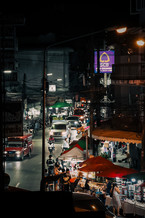

















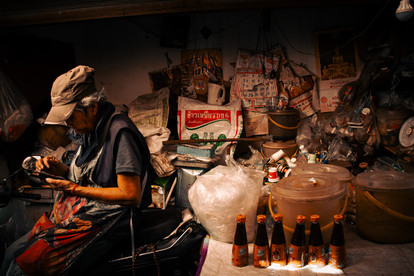



















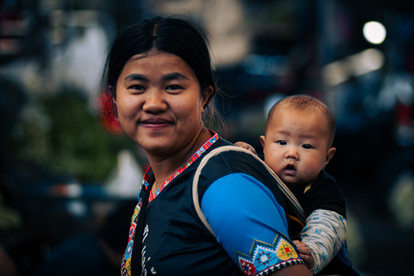























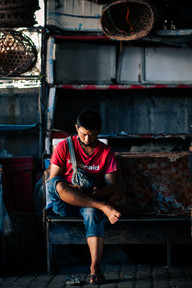


















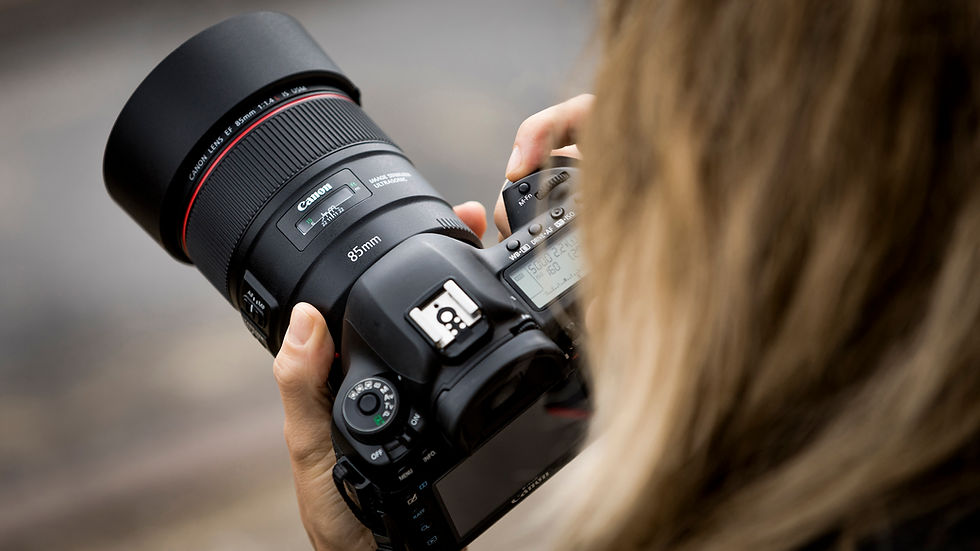
Comments